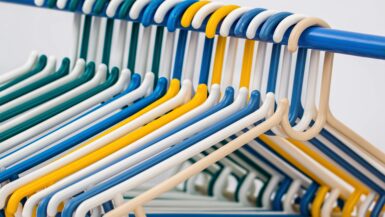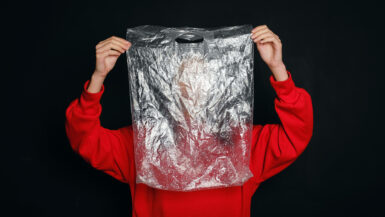In today’s rapidly evolving world, the devastating impact of plastic pollution on marine life has become a critical concern for environmentalists and conservationists alike. The Importance of Plastic-Free Living for Marine Life Conservation delves into the pressing need to adopt sustainable practices in order to protect our precious oceans and the myriad of species that call them home. In this comprehensive article, we explore the alarming consequences of plastic waste on marine ecosystems, the role of microplastics in further exacerbating the crisis, and the vital connection between individual actions and global change. By shedding light on the urgency of the situation, we aim to inspire and empower readers to embark on a plastic-free journey that not only benefits their own lives but also contributes significantly to the preservation of our planet’s invaluable marine resources.
The Devastating Impact of Plastic Pollution on Marine Ecosystems
Plastic pollution has quickly become one of the most significant threats to the health and vitality of our oceans. As the production and consumption of plastic continue to surge, vast amounts of these non-biodegradable materials eventually make their way into marine environments, wreaking havoc on ecosystems and the creatures that inhabit them. In this section, we discuss the various ways in which plastic pollution impacts marine ecosystems and the urgency for adopting a plastic-free lifestyle to mitigate these harmful effects.
Entanglement and Ingestion: The Deadly Consequences for Marine Life
One of the most visible and immediate effects of plastic pollution on marine life is the entanglement of animals in discarded plastic waste. Creatures such as sea turtles, seals, whales, and countless species of fish often find themselves trapped in abandoned fishing nets or ensnared by plastic debris. These entanglements can lead to injury, impaired movement, and even death as the animals struggle to free themselves.
Moreover, countless marine species are at risk of ingesting plastic particles, mistaking them for food. Ingestion of plastic can lead to blockages in the digestive system, malnutrition, and even starvation as the animals feel full but are unable to obtain the nutrients they need to survive. This is especially concerning for filter-feeding organisms like whales and plankton, which inadvertently consume microplastics as they filter seawater for their food.
Microplastics: An Invisible Threat to Marine Biodiversity
Microplastics, tiny particles of plastic less than 5mm in size, pose a significant threat to marine biodiversity. These minuscule fragments are a result of the breakdown of larger plastic items or are intentionally produced for use in products such as cosmetics and cleaning agents. Due to their small size, microplastics are easily ingested by a wide range of marine organisms, from plankton to large predators, and can accumulate in their tissues, causing harm to their health and potentially disrupting food chains.
Not only do microplastics pose a direct threat to marine life, but they also act as carriers for toxic chemicals such as pesticides and heavy metals. These toxins can accumulate in the tissues of organisms that consume microplastics, leading to detrimental health effects and even death. Furthermore, these toxins can be passed up the food chain, ultimately reaching humans who consume seafood.
Destruction of Habitats and Ecosystems
The accumulation of plastic waste in marine environments can lead to the degradation and destruction of vital habitats, such as coral reefs and seagrass beds. Plastic debris can smother sensitive habitats, blocking sunlight and inhibiting the growth of photosynthetic organisms. This can result in a domino effect, as the decline of these foundational species can lead to a collapse of the entire ecosystem.
Additionally, plastic waste can act as a vector for invasive species, allowing them to hitch a ride on floating debris and colonize new areas. This can lead to competition for resources and the displacement of native species, further disrupting the delicate balance of marine ecosystems.
As we explore the devastating impact of plastic pollution on marine ecosystems, it becomes apparent that adopting a plastic-free lifestyle is essential in preserving the health of our oceans and the countless species that rely on them. By making responsible choices and reducing our reliance on single-use plastics, we can help to combat this global crisis and safeguard our planet’s precious marine resources.
How Microplastics Harm Sea Creatures and Threaten Biodiversity
Microplastics have emerged as a significant yet often overlooked aspect of plastic pollution, with numerous studies revealing their insidious and pervasive impact on marine life. In this subsection, we delve into the various ways microplastics harm sea creatures, disrupt food chains, and pose a threat to the overall biodiversity of marine ecosystems.
The Stealthy Infiltration of Microplastics into Marine Food Chains
One of the most concerning aspects of microplastic pollution is their ability to infiltrate food chains, beginning with the smallest organisms and eventually reaching the apex predators. Plankton, the base of many marine food chains, are known to consume microplastics, mistaking them for food particles. As larger organisms feed on these plankton, microplastics accumulate in their tissues, leading to a phenomenon known as biomagnification. This process can result in high concentrations of microplastics and associated toxins in top predators, such as tuna and sharks, which can have severe consequences for their health and reproductive success.
Physical and Physiological Harm to Marine Organisms
The ingestion of microplastics can cause a range of physical and physiological issues for marine animals. These tiny particles can obstruct digestive tracts, leading to blockages, inflammation, and even starvation as the animals are unable to process food properly. Furthermore, microplastics can cause abrasions and damage to internal organs, compromising the overall health of the affected creatures.
In addition to physical harm, microplastics can impact the physiological functions of marine organisms. Studies have shown that exposure to microplastics can disrupt hormonal systems, impair reproductive abilities, and even affect the behavior of certain species. These physiological changes can have far-reaching implications for the survival and success of marine populations, potentially leading to long-term declines in biodiversity.
Microplastics as Vectors for Harmful Contaminants
Another alarming aspect of microplastic pollution is their capacity to absorb and transport harmful contaminants, such as heavy metals, pesticides, and persistent organic pollutants (POPs). When ingested by marine animals, these contaminants can be released and accumulate in their tissues, causing a range of detrimental health effects, including impaired immune function, developmental issues, and reproductive failure.
The presence of these contaminants within marine food chains can also have ripple effects throughout entire ecosystems, as the health and survival of interconnected species become jeopardized. This can ultimately result in a decline in overall biodiversity and the destabilization of marine ecosystems.
As we examine the multitude of ways microplastics harm sea creatures and threaten biodiversity, it becomes increasingly clear that addressing this issue is a vital component of marine life conservation. By embracing a plastic-free lifestyle and raising awareness of the dangers posed by microplastic pollution, we can help to protect the delicate balance of marine ecosystems and ensure the long-term survival of our ocean’s incredible array of species.
Sustainable Alternatives to Single-Use Plastics for Everyday Life
In the quest for a plastic-free lifestyle, one of the most effective steps we can take is to replace single-use plastics with sustainable alternatives. By making small but impactful changes in our daily routines, we can significantly reduce our plastic footprint and contribute to the preservation of marine ecosystems. In this subsection, we explore a variety of easy-to-adopt, eco-friendly substitutes for common single-use plastics, empowering readers to make informed choices that benefit both their own lives and the environment.
The Power of Reusable Containers and Bags
One of the simplest ways to eliminate single-use plastics is to switch to reusable containers and bags. Replacing plastic sandwich bags and cling wrap with reusable silicone bags, beeswax wraps, or glass containers can greatly reduce the amount of plastic waste generated in our everyday lives. Similarly, opting for reusable shopping bags, produce bags, and even collapsible totes can help cut down on the millions of plastic bags that end up in our oceans each year.
Embracing Plastic-Free Dining and Drinking Habits
Another area where we can make a significant difference is in our dining and drinking habits. Investing in reusable water bottles, coffee cups, and insulated tumblers not only helps reduce plastic waste but also saves money in the long run. Additionally, choosing to carry reusable cutlery, straws, and even collapsible food containers can ensure that we avoid disposable plastic items when dining out or grabbing takeout meals.
Revamping Personal Care and Cleaning Routines
Personal care and cleaning products are often overlooked sources of plastic waste. Swapping disposable razors for safety razors, replacing plastic toothbrushes with bamboo alternatives, and opting for shampoo and conditioner bars instead of plastic bottles can greatly reduce the plastic generated in our daily routines. Similarly, switching to eco-friendly cleaning products, such as refillable concentrates, reusable scrubbers, and biodegradable wipes, can help minimize our reliance on single-use plastics in the home.
Supporting Brands Committed to Sustainability
Finally, a key aspect of adopting a plastic-free lifestyle involves becoming conscious consumers and supporting brands that prioritize sustainability. Many companies now offer products with minimal or no plastic packaging, using materials like recycled paper, cardboard, or compostable materials instead. By choosing to purchase from these brands, we send a powerful message to the market that we value environmentally responsible practices and encourage other companies to follow suit.
As we explore these sustainable alternatives to single-use plastics, it becomes clear that our everyday choices can have a lasting impact on the health of our oceans and the countless species that inhabit them. By making these small but meaningful adjustments to our daily routines, we can actively contribute to the conservation of marine life and play a crucial role in the global effort to combat plastic pollution.
The Power of Consumer Choices in Reducing Ocean Plastic Waste
The choices we make as consumers play a crucial role in reducing the amount of plastic waste that ends up in our oceans. By being mindful of our purchasing habits and opting for eco-friendly alternatives, we can significantly decrease the demand for single-use plastics, ultimately leading to a decline in their production and disposal. In this subsection, we discuss the various ways in which our consumer choices can contribute to the reduction of ocean plastic waste and the preservation of marine life.
Supporting Sustainable and Ethical Brands
One of the most powerful ways to make a difference as a consumer is to support brands that prioritize sustainability and ethical practices. Companies that use minimal plastic packaging, source materials responsibly, and invest in circular economy initiatives are at the forefront of the movement towards a plastic-free future. By choosing to purchase from these brands, we not only reduce our own plastic footprint but also send a strong message to the market about the importance of environmentally responsible practices.
Reducing Reliance on Single-Use Plastics in Daily Life
Another key aspect of making a difference as a consumer is to actively reduce our reliance on single-use plastics in our daily lives. This can involve simple changes, such as carrying a reusable water bottle, using cloth shopping bags, or packing lunches in reusable containers. By consciously avoiding disposable plastic items, we not only reduce the amount of plastic waste we generate but also help decrease the overall demand for these products.
Participating in Community Initiatives and Awareness Campaigns
Consumers can also play an active role in reducing ocean plastic waste by participating in community initiatives focused on plastic reduction and marine life conservation. Joining local beach cleanups, supporting plastic waste recycling programs, and engaging in awareness campaigns can amplify the impact of individual actions and inspire others to adopt a plastic-free lifestyle. These collective efforts can lead to significant reductions in plastic pollution and contribute to the preservation of marine ecosystems.
Advocating for Policy Change and Corporate Responsibility
Finally, consumers can influence change by advocating for policy reforms and corporate responsibility in addressing plastic pollution. By voicing our concerns to government representatives, supporting legislation aimed at reducing plastic waste, and holding companies accountable for their environmental practices, we can help drive systemic change in the production and disposal of plastics. This can ultimately lead to a decrease in the amount of plastic waste entering our oceans and a greater focus on sustainable alternatives.
As we examine the power of consumer choices in reducing ocean plastic waste, it becomes evident that our individual actions can have a profound impact on the preservation of marine life. By making conscious decisions to support sustainable brands, reduce our reliance on single-use plastics, and engage in community and advocacy efforts, we can play an instrumental role in the global fight against plastic pollution and the conservation of our precious marine ecosystems.
Success Stories: Plastic-Free Initiatives Saving Marine Life
In the face of the global plastic pollution crisis, numerous inspiring plastic-free initiatives have emerged around the world, demonstrating the power of collective action in protecting marine life and conserving our oceans. In this subsection, we celebrate several success stories that showcase the positive impact of plastic-free living and serve as a testament to the effectiveness of adopting sustainable practices.
Turning the Tide: The Great British Beach Clean
The Great British Beach Clean, organized annually by the Marine Conservation Society (MCS), has become one of the most significant volunteer-driven efforts to tackle plastic pollution on the shores of the United Kingdom. Since its inception in 1994, the event has mobilized thousands of volunteers each year to collect and record plastic waste from beaches across the UK. This data has been instrumental in driving policy changes, including the introduction of a plastic bag charge and a ban on microbeads in personal care products. The initiative has not only contributed to cleaner beaches and healthier marine habitats but also raised awareness of the importance of plastic-free living among the wider public.
Empowering Change: The Plastic Bank
The Plastic Bank, a social enterprise founded in 2013, has developed an innovative model to address both plastic pollution and poverty simultaneously. By establishing recycling centers in developing countries, the Plastic Bank enables people to collect plastic waste in exchange for various goods, services, or even cryptocurrency. This incentive-based approach helps to prevent plastic from entering the oceans while providing economic opportunities for disadvantaged communities. The Plastic Bank’s innovative solution demonstrates that plastic-free initiatives can have far-reaching benefits beyond marine life conservation, creating positive change in multiple aspects of society.
Reducing Plastic in Paradise: Bali’s Ban on Single-Use Plastics
The Indonesian island of Bali, a popular tourist destination, has faced severe plastic pollution problems that have threatened its delicate marine ecosystems. In response, the local government enacted a ban on single-use plastic items, such as shopping bags, straws, and Styrofoam, in 2018. This bold move has led to a significant reduction in plastic waste and inspired other regions in Indonesia to follow suit. Bali’s commitment to combating plastic pollution serves as a powerful example for other tourist destinations and showcases the potential of policy interventions in promoting plastic-free living and protecting marine environments.
Championing a Circular Economy: The Ellen MacArthur Foundation
The Ellen MacArthur Foundation, established in 2010, has been at the forefront of promoting a circular economy, which emphasizes the redesign of products, packaging, and systems to minimize waste and keep materials in use. Through research, education, and collaborations with businesses and governments, the foundation has significantly contributed to the global movement towards a plastic-free future. One notable initiative led by the foundation is the New Plastics Economy Global Commitment, which unites over 500 organizations in a pledge to eliminate problematic and unnecessary plastic packaging and promote the use of reusable and recyclable alternatives. This collective effort demonstrates the power of collaboration in driving systemic change and conserving marine life.
These success stories highlight the incredible potential of plastic-free initiatives in saving marine life and preserving the health of our oceans. By learning from these examples and continuing to champion sustainable practices in our own lives, we can contribute to a global movement that protects our planet’s invaluable marine resources and ensures their survival for generations to come.





Leave a reply